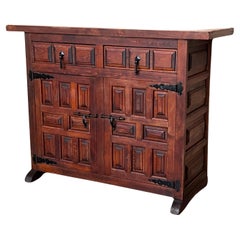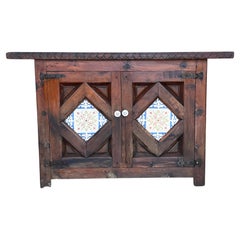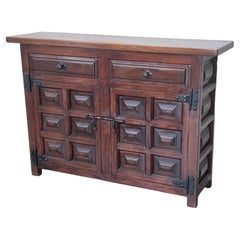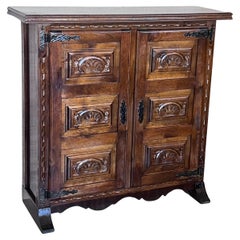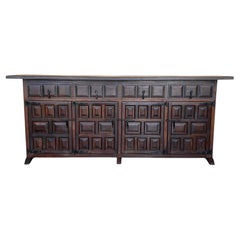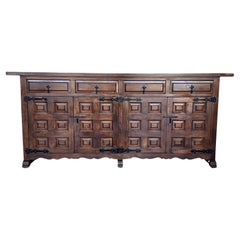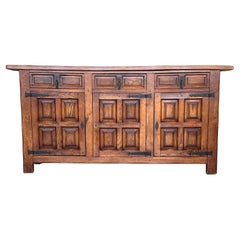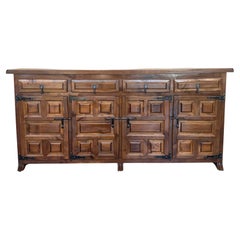Spanish Baroque Credenza
Antique 1890s Spanish Baroque Credenzas
Iron
Antique 1890s Spanish Baroque Credenzas
Iron
Antique 1890s Spanish Baroque Credenzas
Iron
Antique 1890s Spanish Baroque Credenzas
Iron
Antique Late 19th Century Spanish Baroque Credenzas
Iron
Antique Late 19th Century Spanish Baroque Credenzas
Iron
Early 20th Century Spanish Baroque Credenzas
Iron
Antique Late 19th Century Spanish Baroque Credenzas
Iron
Antique Late 19th Century Spanish Baroque Credenzas
Iron
Antique Late 19th Century Spanish Baroque Credenzas
Iron
Antique Late 19th Century Spanish Baroque Credenzas
Iron
Early 20th Century Spanish Baroque Credenzas
Iron
Antique Late 19th Century Spanish Baroque Cupboards
Iron
Antique Late 19th Century Spanish Baroque Cupboards
Iron
Antique Late 19th Century Spanish Baroque Cupboards
Iron
Antique Late 19th Century Spanish Baroque Buffets
Walnut
Early 20th Century Spanish Spanish Colonial Cabinets
Walnut
Antique Late 19th Century Baroque Cupboards
Iron
Antique Late 19th Century Baroque Cupboards
Iron
Antique Late 19th Century Baroque Cupboards
Iron
Antique Late 19th Century Baroque Cupboards
Iron
Antique Late 19th Century Baroque Cupboards
Iron
Antique Late 19th Century Baroque Cupboards
Iron
Antique Late 19th Century Baroque Cupboards
Iron
Antique Late 19th Century Baroque Cupboards
Iron
Antique Late 19th Century Baroque Cupboards
Iron
Early 20th Century Spanish Spanish Colonial Cabinets
Walnut
Antique Late 19th Century Baroque Cupboards
Iron
Antique 17th Century Spanish Baroque Credenzas
Walnut
Antique Mid-17th Century Spanish Baroque Credenzas
Wrought Iron
21st Century and Contemporary Asian Baroque Credenzas
Wood
Antique 19th Century Spanish Credenzas
Antique 1890s Spanish Baroque Credenzas
Iron
Antique Late 19th Century Spanish Baroque Credenzas
Iron
Antique Late 19th Century Spanish Baroque Credenzas
Iron
Early 20th Century Spanish Baroque Credenzas
Iron
Antique Late 19th Century Spanish Baroque Credenzas
Iron
Antique 18th Century and Earlier Spanish Baroque Credenzas
Iron
Antique Late 19th Century Spanish Baroque Credenzas
Iron
Early 20th Century Spanish Cabinets
Antique Late 19th Century Spanish Baroque Cupboards
Iron
Antique 1890s Spanish Baroque Credenzas
Iron
Antique 1890s Spanish Baroque Credenzas
Iron
Antique Late 18th Century Spanish Baroque Credenzas
Iron
Antique Late 18th Century Spanish Baroque Credenzas
Iron
Antique 1890s Spanish Baroque Credenzas
Iron
Antique Late 19th Century Spanish Baroque Credenzas
Iron
Antique Late 19th Century Spanish Baroque Credenzas
Iron
Antique Late 19th Century Spanish Baroque Credenzas
Iron
Antique Late 19th Century Spanish Baroque Credenzas
Iron
Antique Late 19th Century Spanish Baroque Credenzas
Iron
Antique Late 19th Century Spanish Baroque Credenzas
Iron
Antique Late 19th Century Spanish Baroque Credenzas
Iron
Antique Late 19th Century Spanish Baroque Credenzas
Iron
Antique Late 18th Century Spanish Baroque Credenzas
Iron
Early 20th Century Spanish Baroque Credenzas
Iron
Early 20th Century Spanish Baroque Credenzas
Iron
Antique Late 19th Century Spanish Baroque Credenzas
Iron
Antique Late 19th Century Spanish Baroque Credenzas
Iron
Antique Late 19th Century Spanish Baroque Credenzas
Iron
- 1
Spanish Baroque Credenza For Sale on 1stDibs
How Much is a Spanish Baroque Credenza?
A Close Look at Baroque Furniture
The decadence of the Baroque style, in which ornate furnishings were layered against paneled walls, painted ceilings, stately chandeliers and, above all, gilding, expressed the power of the church and monarchy through design that celebrated excess. And its influence was omnipresent — antique Baroque furniture was created in the first design style that truly had a global impact.
Theatrical and lavish, Baroque was prevalent across Europe from the 17th to mid-18th century and spread around the world through colonialism, including in Asia, Africa and the Americas. While Baroque originated in Italy and achieved some of its most fantastic forms in the late-period Roman Baroque, it was adapted to meet the tastes and materials in each region. French Baroque furniture informed Louis XIV style and added drama to Versailles. In Spain, the Baroque movement influenced the elaborate Churrigueresque style in which architecture was dripping with ornamental details. In South German Baroque, furniture was made with bold geometric patterns.
Compared to Renaissance furniture, which was more subdued in its proportions, Baroque furniture was extravagant in all aspects, from its shape to its materials.
Allegorical and mythical figures were often sculpted in the wood, along with motifs like scrolling floral forms and acanthus leaves that gave the impression of tangles of dense foliage. Novel techniques and materials such as marquetry, gesso and lacquer — which were used with exotic woods and were employed by cabinetmakers such as André-Charles Boulle, Gerrit Jensen and James Moore — reflected the growth of international trade. Baroque furniture characteristics include a range of decorative elements — a single furnishing could feature everything from carved gilded wood to gilt bronze, lending chairs, mirrors, console tables and other pieces a sense of motion.
Find a collection of authentic antique Baroque tables, lighting, decorative objects and other furniture on 1stDibs.
Finding the Right Case Pieces And Storage Cabinets for You
Of all the vintage storage cabinets and antique case pieces that have become popular in modern interiors over the years, dressers, credenzas and cabinets have long been home staples, perfect for routine storage or protection of personal items.
In the mid-19th century, cabinetmakers would mimic styles originating in the Louis XIV, Louis XV and Louis XVI eras for their dressers, bookshelves and other structures, and, later, simpler, streamlined wood designs allowed these “case pieces” or “case goods” — any furnishing that is unupholstered and has some semblance of a storage component — to blend into the background of any interior.
Mid-century modern furniture enthusiasts will cite the tall modular wall units crafted in teak and other sought-after woods of the era by the likes of George Nelson, Poul Cadovius and Finn Juhl. For these highly customizable furnishings, designers of the day delivered an alternative to big, heavy bookcases by considering the use of space — and, in particular, walls — in new and innovative ways. Mid-century modern credenzas, which, long and low, evolved from tables that were built as early as the 14th century in Italy, typically have no legs or very short legs and have grown in popularity as an alluring storage option over time.
Although the name immediately invokes images of clothing, dressers were initially created in Europe for a much different purpose. This furnishing was initially a flat-surfaced, low-profile side table equipped with a few drawers — a common fixture used to dress and prepare meats in English kitchens throughout the Tudor period. The drawers served as perfect utensil storage. It wasn’t until the design made its way to North America that it became enlarged and equipped with enough space to hold clothing and cosmetics. The very history of case pieces is a testament to their versatility and well-earned place in any room.
In the spirit of positioning your case goods center stage, decluttering can now be design-minded.
A contemporary case piece with open shelving and painted wood details can prove functional as a storage unit as easily as it can a room divider. Alternatively, apothecary cabinets are charming case goods similar in size to early dressers or commodes but with uniquely sized shelving and (often numerous) drawers.
Whether you’re seeking a playful sideboard that features colored glass and metal details, an antique Italian hand-carved storage cabinet or a glass-door vitrine to store and show off your collectibles, there are options for you on 1stDibs.
